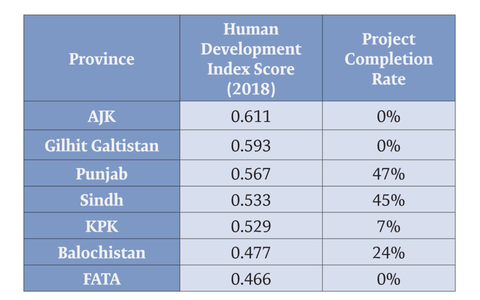CPEC and Provincial Autonomy
- Is CPEC just a state-to-state cooperation agreement or will the economic benefits trickle down to the provinces?
Post-18th Amendment in Pakistan, provinces now have greater financial and legislative autonomy. However, in the case of a mega project such as the China Pakistan Economic Corridor (CPEC), which has been the cornerstone of the Beijing-Islamabad friendship, there has been an increased reliance on centralised planning and decision making. While Pakistan’s Federal Government takes a lead in the CPEC negotiations, it has become increasingly important to define the role that the provinces will play in setting the course of future CPEC-induced industrialisation.
While pertinent information about CPEC continues to remain confidential, it is difficult to ascertain how CPEC will fuel the federal versus provincial power tussle, or more importantly, what its major contributions would be at the provincial revenue generation level.
According to a research conducted by Katherine Adeney, Director of the University of Nottingham’s Asia Research Institute and Filippo Boni, CPEC projects in the province of Sindh and Punjab have shown a higher completion rate as compared to those based in Khyber Pakhtunkhwa, Balochistan and Gilgit-Baltistan.
Moreover, key findings from a Brief by Jonathan E. Hillman and Maesea McCalpin at the Center For Strategic International Studies suggest that only the moderately developed provinces of Punjab and Sindh are approaching project completion rates of 50%. However, they argue that Balochistan has still fared slightly better than other provinces. 24% of its announced projects have been completed and announced funding levels above the national per capita average. Moreover, it is also home to the Gwadar port, which is the site for more than half of the province’s projects.

According to Umair Javed, assistant professor of politics at Lahore University of Management Sciences, even though projects based in Gwadar are packaged as Balochistan’s share, in practice, increased involvement of the federalisaiton, Chinese companies and the military at Gwadar places a question mark over how much will it contribute to the overall economic growth of the province.
Furthermore, as part of the SEZ Act 2012, the federal government has delegated the provinces the responsibility to develop SEZs, while it manages approvals and provides utilities. The three priority SEZs, namely Allama Iqbal Industrial City, Dhabeji SEZ and Rashakai Economic Zone, are planned under CPEC in Punjab, Sindh and Khyber-Pakhtunkhwa, respectively. However, Hasaan Khawar, a public policy expert and an honorary Fellow of Consortium for Development Policy Research, also adds that CPEC SEZs are similar to other special economic zones, with no special incentives or exclusivity rights for Chinese investors and offer a level playing field to other domestic and international investors. As, CPEC would only bring these SEZs to the limelight for Chinese investors, their ultimate success is contingent on the overall business environment in Pakistan.
As the work on CPEC continues, it would be interesting to see how this ‘state-to-state cooperation agreement’ involves and benefits the provinces of Pakistan.


















Comments
Comments are closed.